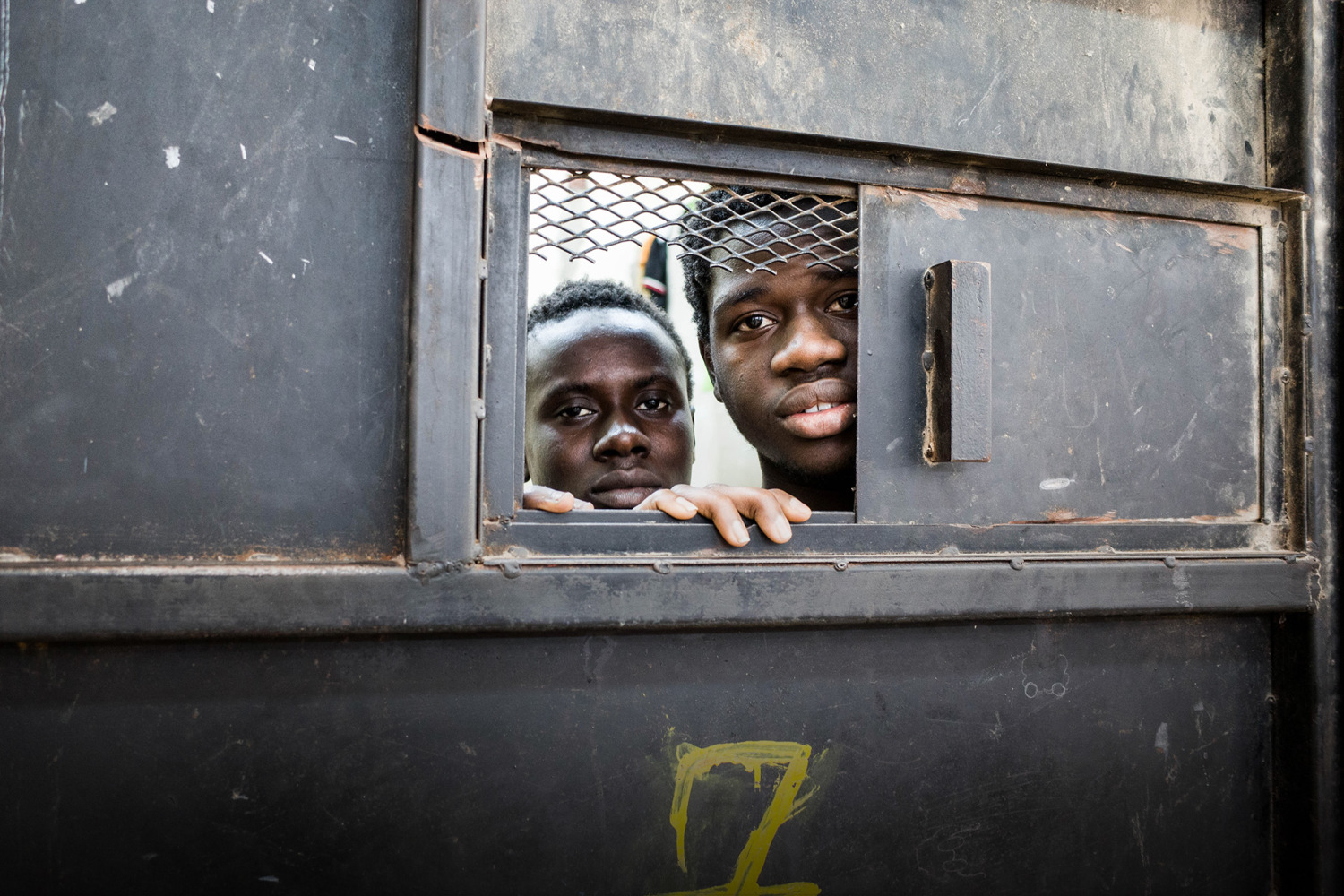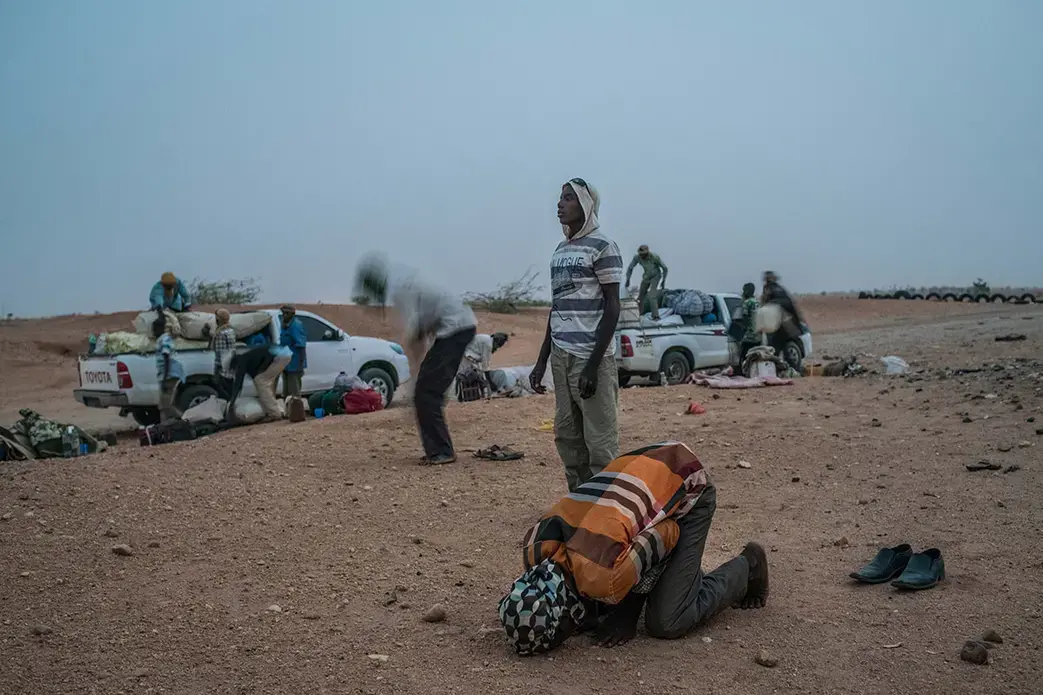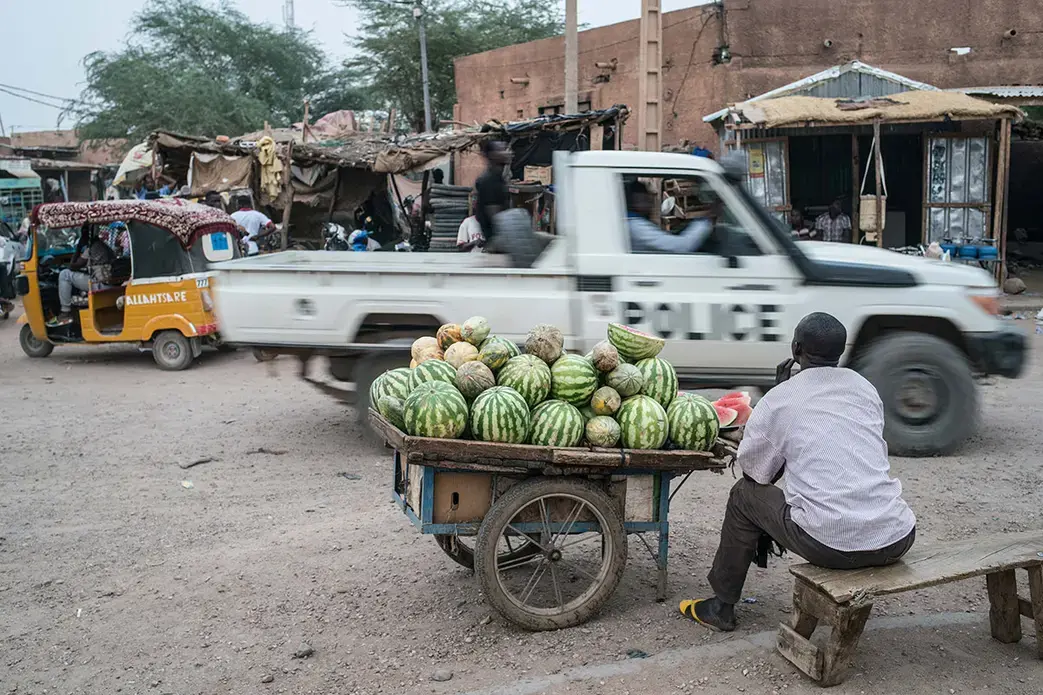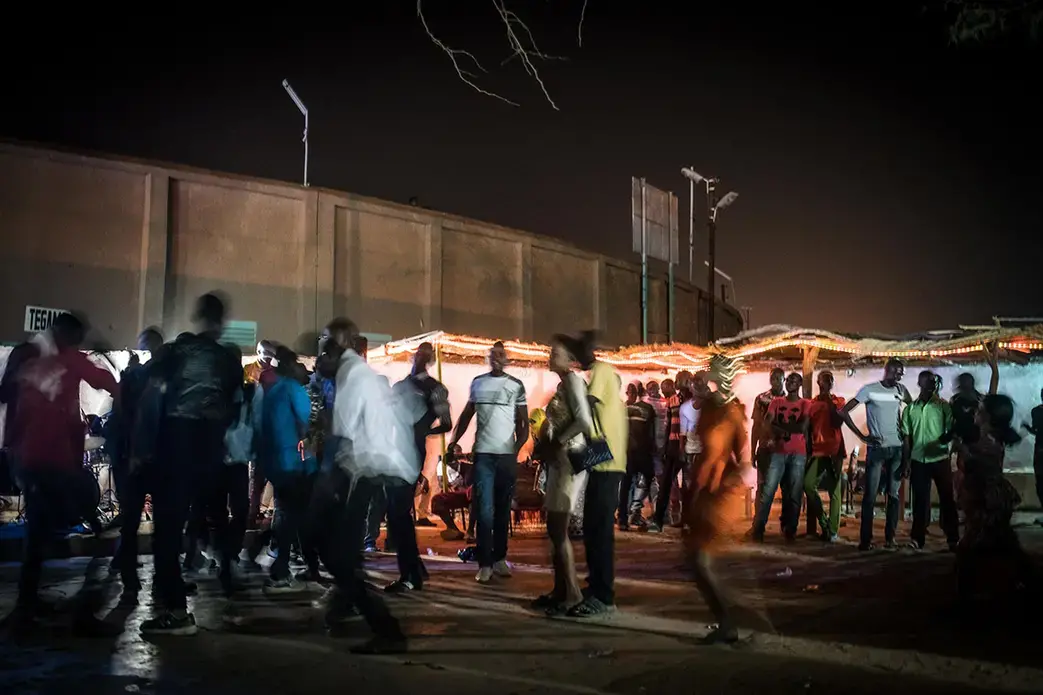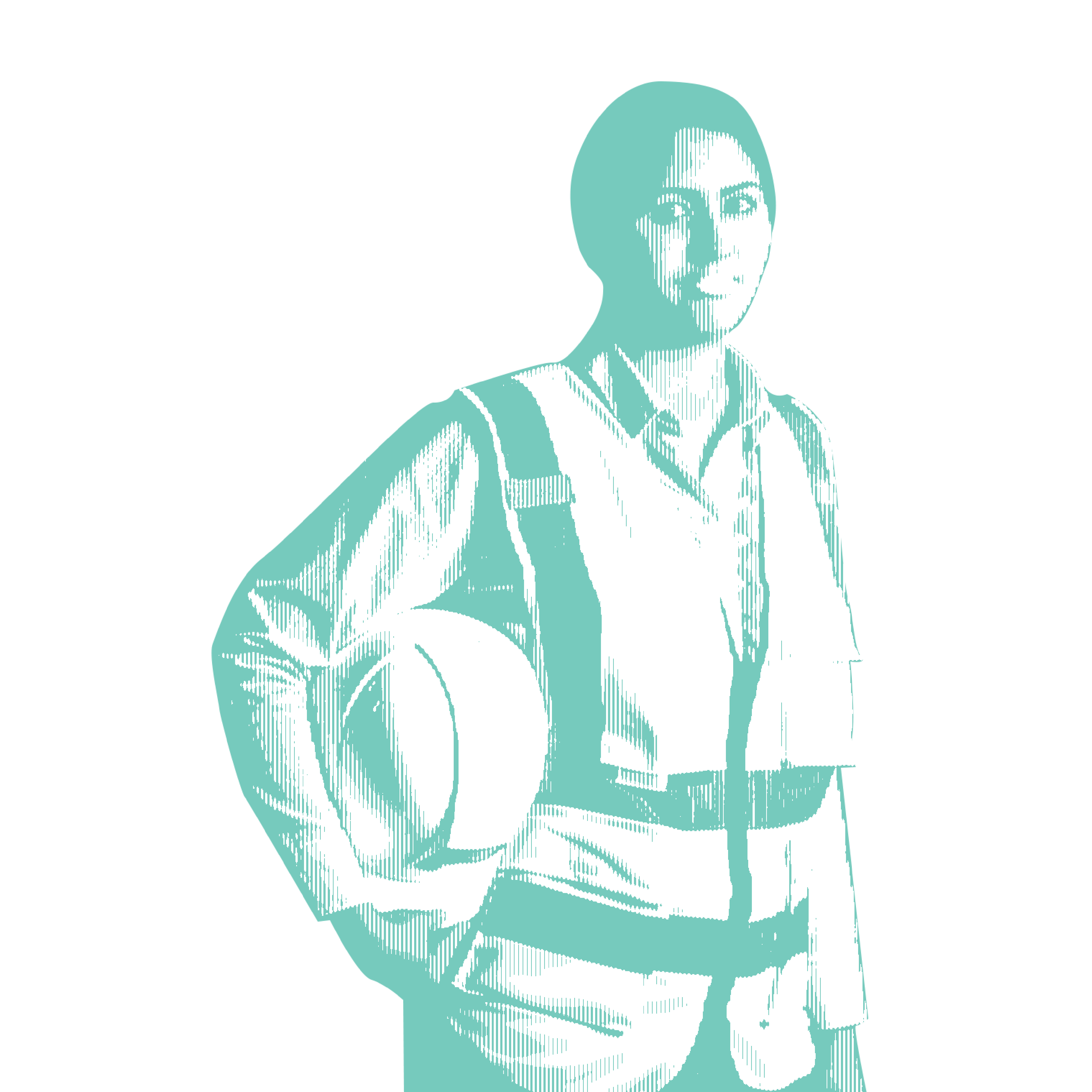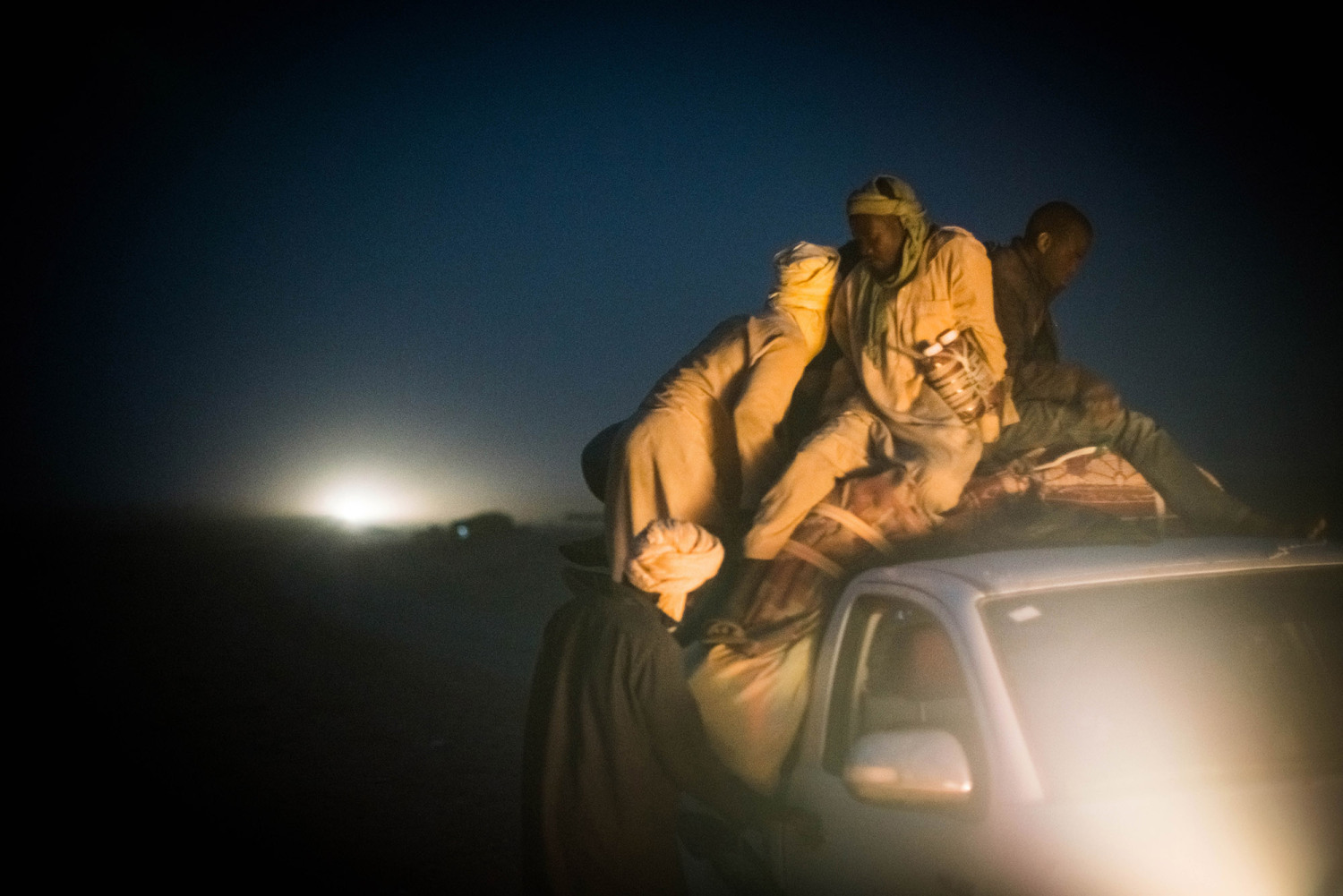
AGADEZ, Niger — Ali leaned into the accelerator and squinted into the darkness. It was 3 a.m. on the southern edge of the Sahara, still another three days’ drive through dizzying heat and shifting sand dunes to get to the border with Libya. He was doing 60 miles per hour with the headlights off, maneuvering the black Toyota Hilux around steep ravines and past rocky outcroppings by starlight in order to avoid detection. In the back, 25 Europe-bound migrants, all of them from Nigeria, clung to each other and to a handful of wooden poles that were wedged into the open bed of the truck.
A solemn 33-year-old with stained teeth and heavy bags under his eyes, Ali had made the perilous trip to Libya more than 100 times before — but never by this route. A few months prior, after Niger’s government struck a deal with the European Union to shut down one of the world’s most heavily trafficked human-smuggling routes, the army had begun intercepting convoys of migrants. The soldiers arrested the drivers and impounded their trucks. Sometimes, Ali and other drivers said, they opened fire on vehicles that tried to flee, aiming for tires but hitting people as well. So the drivers stopped using the main road across the desert, a well-worn national route that runs more than 600 miles to the Libyan border, and forged their own paths across the vast and uninhabited Sahara.
Each time he crested a dune, Ali imagined the army lying in wait. He had long dreaded desert bandits, notorious for carjacking travelers along the old national route and then leaving them to die of thirst or exposure. Now he imagined new ways to suffer at the hands of a military that had once profited from human smuggling by levying an unofficial tax on each vehicle but which had recently begun to hunt drivers like Ali with the same urgency that it pursued al Qaeda militants.
Ali’s mind was running wild with terrifying possibilities of what he might encounter in the dark when he felt the ground fall away and the vehicle pitch to the side. For a moment, he was airborne. Then the truck hit the ground with crushing force, careening to a halt on its side at the bottom of a gully he had missed in the darkness. He heard the groans before he wriggled himself free from the wreckage. Then he saw the trail of people thrown from the truck at odd intervals behind him. Two of them lay prostrate under a 50-gallon fuel tank. Their bodies were still.
Shaken but unhurt, Ali pulled out his Thuraya satellite phone and called a friend in Agadez, the age-old caravan city in Niger that has become inextricably linked with the modern migrant trade. He gave the friend his coordinates so that a search party could find them and then fished a trowel out of the truck. As the injured migrants looked on, he buried the two dead Nigerians in a shallow grave in the sand. “I don’t remember their names,” Ali said. “There are too many who come and go. I can’t keep them in my head.”
Until a little more than a year ago, Agadez was the epicenter of massive waves of migration from Africa that began in 2011, when the fall of Libya’s dictatorship opened a clear path through weak and failing states to Europe’s southern border. In 2016, a record 181,000 people arrived on Italy’s Mediterranean coast. Most of them were sub-Saharan Africans fleeing poverty, war, and oppression. More than half of them likely traveled through Agadez on their way.
Comprising a dense warren of mud-brick compounds that bear the same shade of cocoa brown as the surrounding Sahara, Agadez has been a place of exchange for more than 600 years. Like Timbuktu in neighboring Mali, it was a center of Islamic learning in the Middle Ages and an important transit point for caravan traders. But whereas the cargo of old was gold, salt, and slaves, now it is weapons, narcotics, and migrants. The trade touches almost everyone in the city, whether they are directly involved or living off the service industries that have developed around it. Grocers, hoteliers, the police — all of them are to some extent dependent on this illicit flow of people and goods. Before the crackdown began, the Nigerien army openly escorted the smugglers’ convoys into the desert in exchange for a share of the profits. Sometimes hundreds of Toyota Hiluxes loaded down with young men made the crossing in a single day.
In its heyday as a smugglers’ paradise, from 2013 to 2016, Agadez was crawling with profiteers who had money to burn. They would flock to the bars and nightclubs, Tuaregs and Toubous in flowing traditional jalabias mixing with Nigeriens of other ethnicities in high-tops and skinny jeans, dancing and draining $4 cans of Heineken until the call to prayer echoed through the city at dawn. But when I visited in May, the city no longer felt like a freewheeling frontier boomtown. Market stalls sat empty in the 110-degree heat while drivers lounged all day in their yellow three-wheeled taxis without scoring a fare. The nightclub at the Hotel de la Paix, a garish modern fortress rumored to have been financed by Muammar al-Qaddafi, still opened each night around midnight, the purr of a diesel generator audible over the rollicking pulse of Tuareg music. But every time I went in, the place was mostly empty.
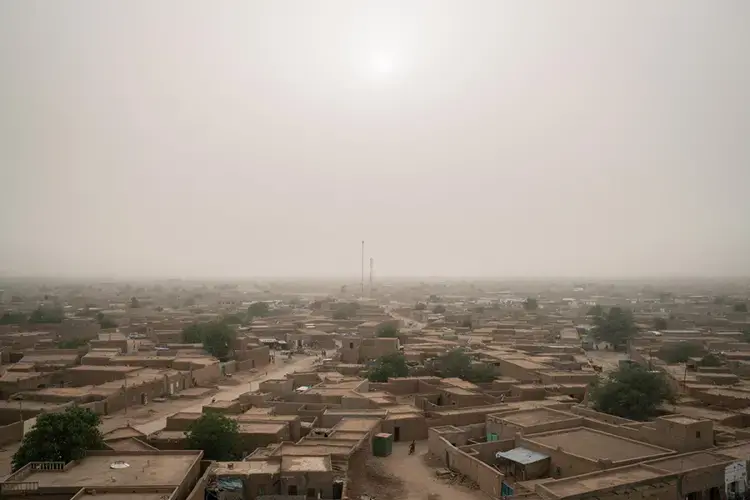
The collapse of Agadez’s economy was just one of the unintended consequences of Europe’s bid to halt the flood of unwanted migrants and refugees toward its shores. In 2015, as the European Union was struggling to cope with what would amount to a record 1.3 million asylum-seekers that year — a 122 percent increase from 2014 — EU officials held a series of emergency talks with African leaders. In November of that year, they announced a $1.9 billion EU Emergency Trust Fund for Africa designed to combat the root causes of migration, including poverty and conflict. The EU also struck bilateral agreements with several African countries that migrants depart from and travel through on their way to Europe, aiming to strengthen border controls and disrupt smuggling networks. It designated Niger a priority country as part of a partnership framework agreement it made with the government in 2016, paving the way for a pledge of $633 million in exchange for stopping the flow of migrants through its borders.
In addition to funding development projects designed to wean the economy off trafficking, the EU, along with some of its member states, delivered training and equipment to Niger’s security forces to help them clamp down on smugglers. Soon the same army that once escorted smugglers to Libya was putting them behind bars to be sentenced under a new anti-trafficking law passed with the encouragement of European governments.
From behind a broad wooden desk stacked with files, Yahaya Godi, then the secretary-general for the governorate of Agadez, explained his government’s abrupt change of heart. “We must fight against migration and human trafficking because it has many consequences,” he told me. “For instance, there is insecurity. It may also be connected to terrorism or the traffic in weapons.”
Surrounded on all sides by conflict and instability — the country shares borders with Nigeria, Mali, and Libya, all of which harbor significant terrorist threats — Niger has positioned itself as a key counterterrorism partner for Western nations, including the United States and France, both of which have military bases in the country. As a result, it has received hundreds of millions of dollars in military assistance from those nations. The migration crisis has presented Niger with a similar opportunity to line its coffers, and it has happily adopted Europe’s view of human smugglers as a threat to regional stability.
“It’s very impressive how they fight for security,” said Ambassador Raul Mateus Paula, the head of the EU delegation in Niger, when I went to see him in Niamey, the capital. “This is very, very important because they are in the middle of problems: Libya, Mali, and Nigeria. So they have to increase dramatically their security expenditures. That’s one of the reasons why the European Union is making a huge effort of budget support.”
Paula seemed pleased with the government’s efforts to halt migration so far. He pointed to the dramatic drop in migrants recorded transiting through Niger en route to Libya and Algeria, key jumping-off points to Europe, as evidence that the partnership is working. Between February and May 2016, the International Organization for Migration (IOM), which has received funding from the EU to open transit centers where migrants are encouraged to return home, recorded 116,347 “outgoing” migrants in Niger. During the same period this year, it recorded less than a quarter of that number. In press releases, the EU has touted the number of smugglers arrested and trucks impounded by authorities. “I think that they made very, very important reforms,” Paula said. “And I think we have to keep working with them, support them, to fight terrorism [and] traffickers.”
The actual impact of Europe’s intervention in Niger is less clear. Since the crackdown began, smugglers have mostly stopped passing through established outposts and way stations, including those where IOM monitors the flow of migrants. This raises the possibility that the organization is underestimating the number of migrants still passing through Niger, perhaps by a significant margin. That possibility seems even more likely in light of the data on migrants who actually make it across the Mediterranean Sea to Italy. As of Sept. 5, IOM reported that nearly 100,000 migrants had arrived in Italy this year from North Africa, more than half of them originally from West Africa, meaning that it’s likely they passed through Niger on their way. An estimated 400,000 additional migrants are currently stranded in Libya, caged in squalid detention facilities and prevented from making the dangerous sea voyage by militias in the pay of European nations.
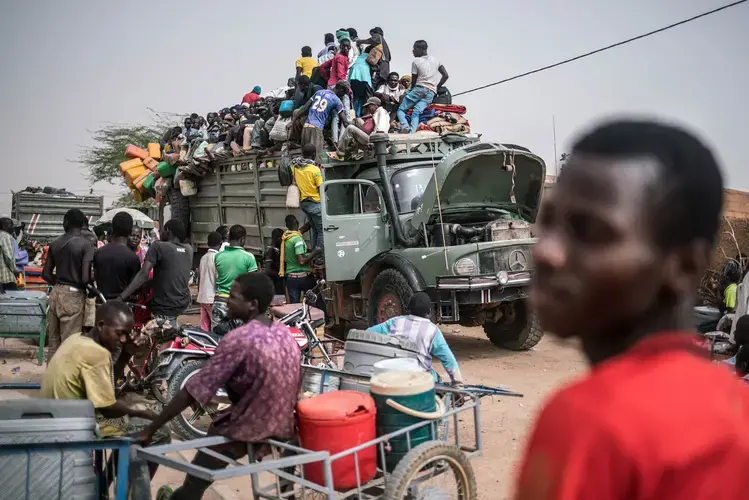
What is clear is that Niger’s EU-funded crackdown has heightened the risks for smugglers, as well as for migrants. One of those who paid a price for defying the authorities was Garba Hamani, a coxeur, or connection man, who was arrested last year as he loaded 49 migrants into trucks. They were eventually released and taken to the IOM transit center, but Hamani spent nine months and 20 days behind bars. He said the jail in Agadez was filled with people connected to the migrant trade — smugglers, drivers, and coxeurs like him. But the smuggling business hasn’t stopped; it’s just been driven deeper underground. “You cannot stop this thing. If the government stops people here, they will just go another way,” he said.
The new routes are both longer and more dangerous, according to nearly a dozen drivers I interviewed in Agadez. Some pass through mountainous regions outside the city before crossing vast stretches of desert. Some hug the border with Chad. One area where many of the new routes converge is in a desolate region some 20 miles outside of Dao Timmi, an old military installation in the far north of the country. Here, the trucks slow to a crawl and pass single file through a minefield that dates back to an uprising by ethnic Toubous in the 1990s. Used for years by weapons and drug smugglers because authorities stayed away, the route is now commonly taken by migrants. “They made it a crime, so now it follows the criminal routes,” Hamani said.
Ali, who like most of the smugglers I spoke with asked to be identified by only his first name, started taking the road through the minefield soon after the crackdown started last year, a few months before his deadly nighttime crash. So did Laminou, a muscle-bound 25-year-old with short dreadlocks. Laminou deals in cars, specifically stolen cars from Libya that he smuggles in without papers. One day, he came upon a nightmarish scene: the obliterated remains of a pickup truck surrounded by the dead bodies of multiple migrants. “We couldn’t tell them apart. It’s one man’s leg, one man’s arm — all black,” he said. He and another driver did their best to bury the remains. Then they prayed together and set off again in their trucks.
No one knows how many migrants have died in the desert. Trucks get lost, break down, or are attacked by bandits all the time. Often, nobody finds out until another driver happens upon the human remains. “We know that many people are dying in the Mediterranean. But many are dying in the desert as well, and we have not many statistics,” Paula said.

In addition to being more dangerous, the new routes are also more expensive. Where it once cost around $300 to travel to the next staging post in Libya from Agadez, it now costs more than double that amount. As a result, many more migrants are finding themselves stuck in the squalid compounds known as “ghettos” that smugglers have set up in secret locations throughout the city. This was the predicament Sheriff Sonko had been facing for the past nine months. A baby-faced 21-year-old, he left Gambia without telling his parents so they couldn’t try to talk him out of making the journey. But he hadn’t counted on the price of crossing the Sahara to skyrocket overnight. “If my parents don’t pay, I won’t leave here,” he told me.
Increasingly raided by the authorities, who arrest the smugglers and turn the migrants over to IOM, the ghettos are getting smaller, and they are constantly being moved so they won’t be discovered. Gaining access to the one where Sonko was living took days of negotiation because the smugglers feared I would be followed or would otherwise inadvertently reveal its location. The day I visited the half-finished compound in a largely abandoned neighborhood on the farthest margins of the city, just four other migrants besides Sonko were there — two from Cameroon and two from Guinea. A group of 29 West Africans had departed for Libya the night before. The structure itself was crumbling and covered with a thick dusting of sand. The dirt floors were bare except for a few empty water bottles, plastic bags, and a broken sandal — the detritus of an unknown number of previous inhabitants. On the walls, migrants had scribbled phone numbers, presumably of family members, drivers, and coxeurs. In one corner, someone had left a message in block letters: “The road of success never smooth.”
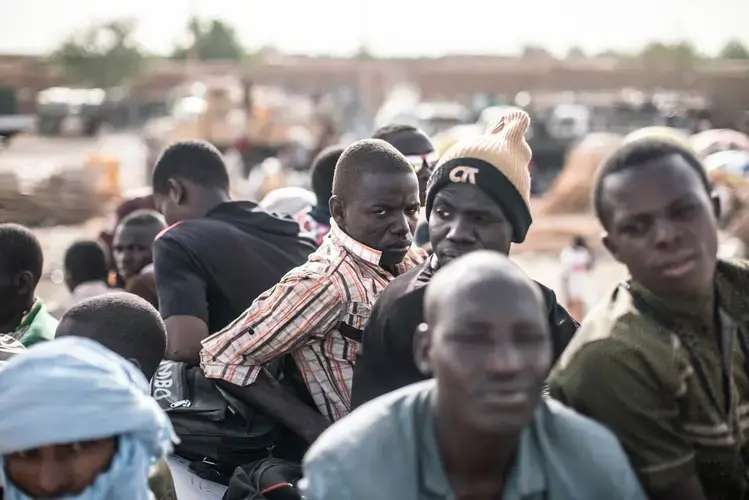
New routes pose new risks for those who attempt to ply them. But just as dangerous is the climate of fear that has settled over the Sahara in the wake of the crackdown. Ali blames himself for the deaths of the two migrants killed in the crash. But he also feels resentment toward the EU for having forced him to drive with his headlights off. “When they arrest you, that’s not a law coming from here,” Ali said. “That’s a law coming from Europe.”
When faced with the choice between ensuring their own freedom and saving their human cargo, many drivers choose freedom. Sometimes that means leaving migrants behind in the middle of the desert and speeding off to avoid a military patrol. According to Azaoua Mahaman, an IOM official based in Agadez, more and more migrants are being abandoned in this way. Since the beginning of the year, he said in May, IOM had worked with Nigerien authorities to facilitate nearly a dozen rescue operations. “The main reason we see abandoned migrants is because of the patrols,” he told me. “[The smugglers] are afraid of going to prison, so they drop the migrants and flee.”
This is hardly an irrational response. Unverified reports that the military has opened fire on migrant vehicles have circulated widely. Three different drivers told me that they knew of such incidents, though none had been present when they occurred.
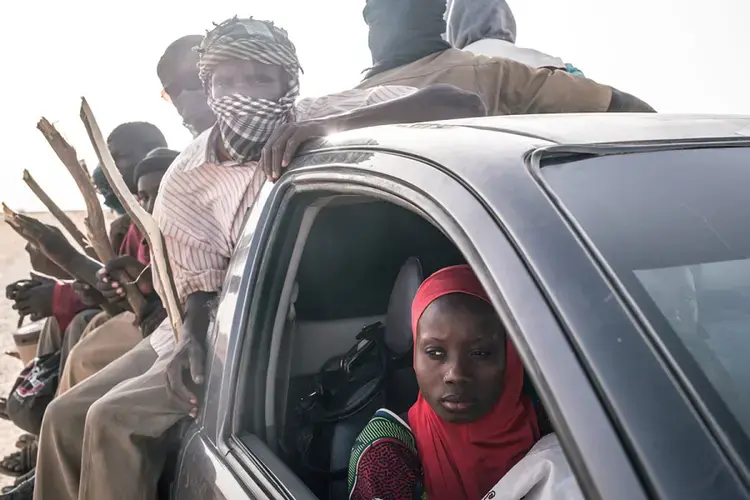
One migrant was there when soldiers lit up a vehicle carrying two dozen passengers: In April, a slender 21-year-old Nigerian named Yinka was traveling through the desert in the back of a Hilux when suddenly gunshots rang out. Bullets shredded the tires beneath her and punched through the side of the vehicle. One hit her friend in the stomach, and she doubled over. Auntie Biola, as the six other women traveling together from Nigeria’s Oyo state called her, bled to death as Nigerien soldiers looked on.
The driver fled the scene, and the migrants were all taken into custody. But first, the soldiers, who Yinka said were wearing uniforms, beat them all and raped the six surviving women. She said they were beaten and raped again when they arrived at the police station in Madama, one of the last settlements before the Libyan frontier. Because the other survivors of this ordeal had all been repatriated to Nigeria by the time I met Yinka in the IOM transit center in Agadez, I was unable to verify her claims. But her account was consistent with testimony from other migrants at the center and with reports by rights groups on abuses, including rapes, committed by the Nigerien military as recently as 2007. Niger’s military and its ministries of defense and interior did not respond to written requests for comment; Paula, the EU ambassador, told me that he was not aware of any reports of abuse. “The traffickers,” he said, “are the real criminals.”
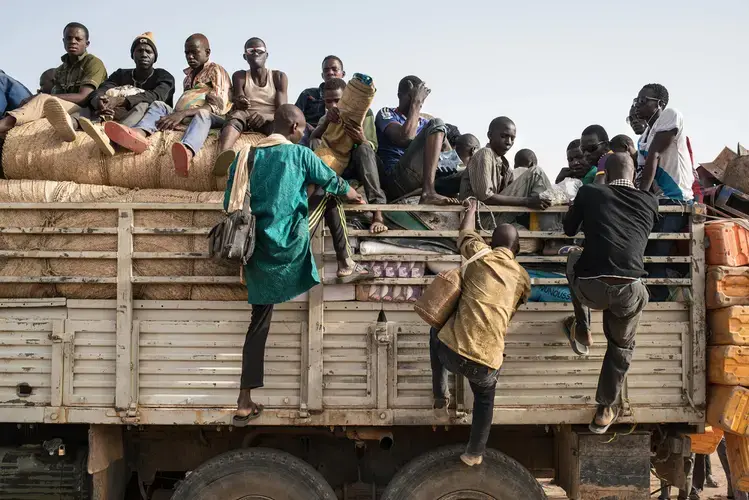
Most Nigeriens would disagree. Smugglers — known as passeurs, or “ferrymen” — are widely regarded as providing a vital service. (Migrants who send home remittances are seen as heroes in this part of the world.) Still, passeurs are often involved in other forms of criminal activity — weapons and drugs, for instance — and now many of them are out of work. The crackdown hasn’t stopped the flow of migrants, but it has diverted much of the human traffic away from Agadez and pushed most of the profits toward smugglers with the highest appetite for risk. For those who are still making the trip, the EU has laid out a feast. For everyone else, it’s famine.
“Today, [illegal migration] generates more money than before,” Rhissa Feltou, the mayor of Agadez, told me. But the profits go to “small mafia groups” instead of to a broad cross-section of society as they did before. The new policy, while necessary in his view, means that Agadez will suffer because its residents have historically been dependent on smuggling.
The EU has pledged to fund job trainings and other development projects to help former smugglers transition to new careers. But the crackdown commenced more than a year ago, and former drivers, coxeurs, and ghetto owners all said in May that they had yet to receive any assistance. (The EU said the programs were on track and that the job trainings would begin soon.)
“We are very angry with the EU because they promised to help us. We even declared that we stopped the job,” said Mohamed, a lean, weather-beaten man in his early 40s who used to run a lucrative migrant ghetto out of his home. “But the promises have not been met. They have destroyed the life of Agadez.”
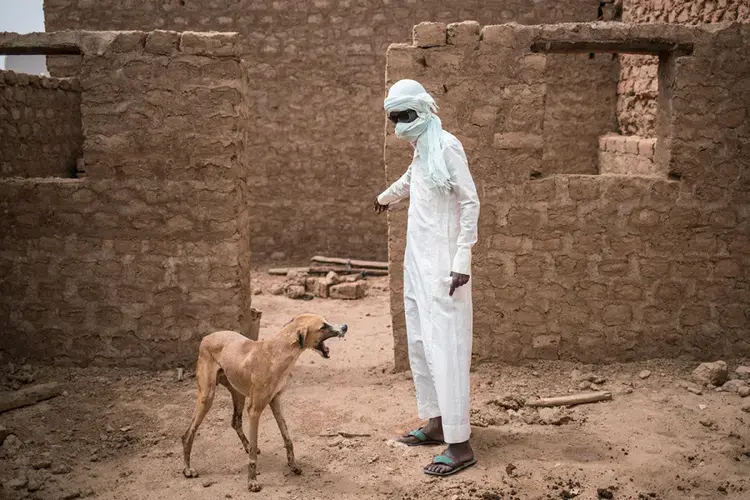
Eighteen months ago, Mohamed was moving more than 300 migrants a week through his ghetto, for a weekly profit of around $10,000 to $13,000. Business was so good that he decided to knock his house down and build a bigger one so that he could fit more migrants in his courtyard. But before the new house was finished, the crackdown was underway, and he was forced to take his business underground.
Today, he lives with his wife and children in a single room in the courtyard of his younger brother’s house in Agadez’s old town, not far from the ancient mosque whose conical minaret towers over the rest of the low-slung city. Mohamed comes from noble Tuareg lineage, and his older brother was once a famous musician in Agadez. (Posters of the brother in traditional Tuareg dress hung from the walls of the compound, alongside a framed photograph of Qaddafi in aviators and a flowing headdress.) But the family appeared to have fallen on hard times; goats pranced through the living space, and pigeons clucked from inside a coop made of mud and straw.
“The way I live now and the way I lived one year ago is very different,” Mohamed said, leading me out of the compound and across a narrow alleyway between crumbling mud walls to a larger, half-finished complex made of rectangular brown bricks. A stray dog roused itself from a sandy depression to snarl at us and then slunk off into a corner. This was once his home, he explained, and where he had made a small fortune housing migrants before they were smuggled to Libya.
He told me that he would wait to see if anything comes of the promised job training programs, but he doubts that kind of legitimate work would ever pay as much as he earned running a migrant ghetto. Many of the smugglers he knows have already gotten back into the game, including his third brother, who was arrested in a sting operation by authorities in May. “Some people will try and get caught. Others will take the dangerous routes and die,” Mohamed said. “This migration business, anyone who has experienced it can never leave it.”



